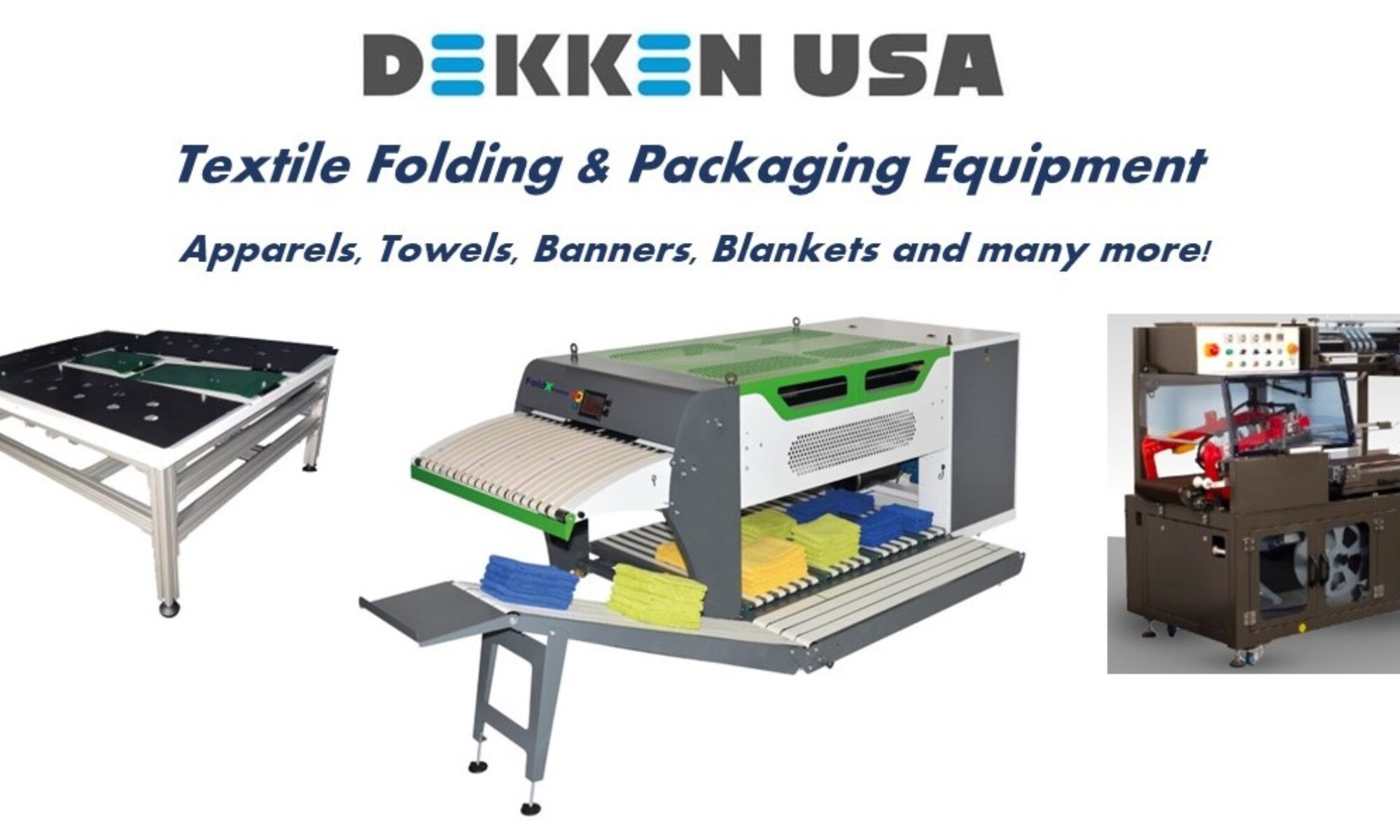



FoldXpand is a design, geared towards industrial scale (24/7) folding. Its robust & reliable design, precision programming, along with high-end components allows FoldXpand to accompany your company in an ever changing, dynamic market. The quality of the folds are “Retail-Quality”.
The FoldXpand can be expanded with an ironer function. In case for the need of an improved presentation.
What FoldXpand Folds:
FoldXpand can fold a wide range of middle to large pieces of textiles such as
- Banners
- Bed & Table Linen,
- Blankets
- Curtains
- Flags
- Rugs (thin)
- Towels
- you name it, we try it!
MODEL BASE CHARACTERISTICS
- Available sizes: (300 cm (118″), 330 cm (129″), 350 cm (137″), 400 cm (157″))
- Strong rigid design.
- Maintenance-free transmission due to timing belts / flat belt drive. No chains, so no lubrication required.
- All photocells are of the proximity type and maintenance free (face down, no use of mirror).
- Thanks to inverter controlled motors, speed is adjustable from 8 to 50 m/min (24ft to 150 ft/ min).
- Automatic rejection of miss-fed / misaligned pieces.
- Manual reject by operator.
- Double blow tubes in primary folds for higher accuracy.
- First cross fold rollers open automatically in case of jam.
- Automatic fold selection based on piece dimensions.
- Several cross-fold configurations.
- All cross folds are made by mechanical knife.
- Wide cross fold section of 900 mm (35″).
- Exit of item at the back or on the side.
- Stacking options.
- Incline conveyor after the stacking option.
- Up to three Later Folds
- Up to three Cross Folds
The FoldXpand folding flexibility:
The high accuracy and folding flexibility is due to the programming options available, allowing to precisely influence each individual folding step.
You need to touch the screen no more than two times and you can switch from one to another. For this change, no mechanical modifications are necessary! – We call it the “two-second-change”.
In most cases, the customer will send us samples and we pre-set the machine for those items. When installing the new machine, we upload the programs and typically, no programming is necessary anymore. Having that said, at times, adjustments are wanted for various reasons and therefore, we will show how and where to change the programs or possibly make the changes with a studio machine and send you the file.
FoldXpand employs up to three Lateral Folds and Three Cross folds:
The First Lateral Fold (fold #1):
At feeding of the item, FoldXpand measures the length of the textile and adjusts the necessary fold program “on-the-fly”. This allows to determine where exactly the first lateral fold will be implemented by the means of air. Typically it will be a 1/2 fold.
The Second Lateral Fold (fold #2):
The second Lateral fold too will be induced by air. Typically, this fold is yet again a 1/2 fold. This fold takes place basically inside the machine.
In case the textile has not been fed correctly and is outside a certain specification, it will be rejected and normally conducted to a table at the back of the machine.
Note: A reject will not be counted as a fold by the internal counter!
FoldXpand can be ordered with up to three lateral folds!
The First Cross Fold (fold #3):
The First cross fold is initiated by a blade. Typically the fold will be a half-fold to achieve maximum size reduction.
The Second Cross Fold (fold #4):
The Second Cross Fold is carried out by sandwiching the item between a belt system. All belts are driven by servo motors and can be precisely influenced in the pr-settings of the program.
The Third Cross Fold (Fold #5):
The Third Cross Fold is basically a replication of the Second Cross Fold.
The Choice of Exits:
The “Side Exit”:
The standard machine configuration foresees exiting on the side. In that case, after processing the final fold, the item can be conducted to the side, where it will drop the final fold onto a stacker. The pre-set program will determine after how many pieces the stacker will move the pile forward onto an incline belt. The incline belt could be conducted to an automatic bagging station, to further customizing labeling options or other processes.
The “Linear Exit” or the exit on the back of the machine:
FoldXpand also offers the “Linear Exit” which is on the back side.
This exit is typically used for “rejects”-purposes, as the size reduction after only two lateral folds only would not be very efficient, in most cases. However, if more size reduction than the standard maximum 6 folds is required, two FoldXtreme can be synchronized and a total of “8-fold-size-reduction” is achievable.


